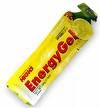 With energy gels being my primary energy source during ultras and weight being an essential consideration at the Marathon des Sables, I started thinking about which energy gels offer the greatest caloric density. While I initially planned on looking at only caloric density, I ended up comparing many other aspects of energy gels including their caffeine content, electrolyte content, and sugar profiles, as well as recording other ingredients of note. [Click on any table below to enlarge.]
With energy gels being my primary energy source during ultras and weight being an essential consideration at the Marathon des Sables, I started thinking about which energy gels offer the greatest caloric density. While I initially planned on looking at only caloric density, I ended up comparing many other aspects of energy gels including their caffeine content, electrolyte content, and sugar profiles, as well as recording other ingredients of note. [Click on any table below to enlarge.]
For this review, I looked at 8 energy gel lineups that are commonly available at US retailers. [My highly scientific method for sample collection involved me sequentially looking at the gels on my shelf and then visiting a large outdoor retailer, a bike shop, and a large athletic goods store in an attempt to find additional gels.]
 The gels included in this review are:
The gels included in this review are:
Caloric Density
As I mentioned above, my primary personal goal from this exercise was to identify the energy gels with the greatest caloric density, meaning the most calories per gram. Top honors are shared by Gu Roctane (see iRunFar’s review), Gu Energy Gel, and Honey Stinger at 3.0 calories (technically kilocalories) per gram. I would have guessed that watery PowerBar Gel (formerly known as Power Gel) would have had the lowest energy density, but at 2.6 calories/g it ranked much higher than Hammer Gel (2.4 calories/g) and basement dweller Accel Gel (2.2 calories/g).

Caffeine Content
We’ve previously discussed the possible endurance benefits of caffeine here at iRunFar. Regardless of where you fall on the subject of taking caffeine while running there’s an energy gel for you. Of the 8 energy gel lineups I investigated, only Gu Roctane was not available in a caffeine-free variety. On the other end of the spectrum, both CarbBoom! and Clif Shot offer a double espresso variety containing 100 mg of caffeine per pack. Between the extremes, caffeine contents for energy gels ranged from 20 to 50 mg.

Electrolyte Content
In general, I rely on sports drink and electrolyte tablets to replace my salts when running. However, 7 of the energy gel varieties contain potassium and all 8 varieties of contain sodium. While all but a few of the gels contained low enough levels of sodium not to alter an electrolyte replacement strategy, it would be wise to keep in mind that a packet of Power Gel has 200 mg of sodium, Roctane has 125 mg, and Accel Gel has 100 mg.

Sugar Profile
I provide the following table in case you are curious as to which simple and complex carbohydrates your favorite gels contain. Simple sugars include fructose and dextrose (a form of glucose), as well as those found in honey and fruit juice. Maltodextrin is the prevalent complex carbohydrate found in energy gels. Clif Shot’s brown rice syrup contains a mix of simple and complex carbohydrates.

Other Ingredients
Five of the energy gel lineups featured ingredients other than carbohydrates, electrolytes, and caffeine. These added extras included various vitamins, amino acids, and herbs. Take a look for yourself at what these gels contain.

[Disclaimer: This comparison is only meant as an overview of energy gels. Food intake is of critical importance in longer endurance events and you should, therefore, carefully consider your nutritional plan. I recommend you further consult the product websites to which I provided links above. In addition, it is wise to personally test each variety and even each flavor of gel you intend to use in a key race before race day. You never know which ingredient may cause you stomach distress or which flavor will offend your palate.
Enough of the geeky stuff and disclaimers: What are your favorite energy gels and why?
[While I independently came up with the idea to compare energy gel caloric densities, I’ve got to tip my running hat to this UK comparison of energy gels that I first saw on TrailrunningSoul.com. However, I did not consult that comparison within months of designing my own. It’s interesting to see where and how they differ.]
